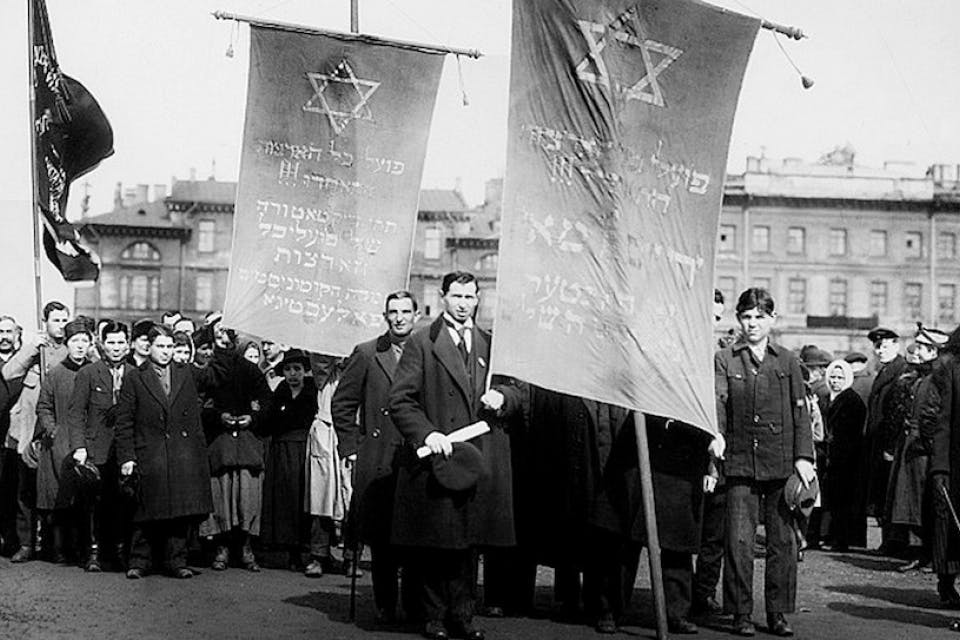
September 12, 2022
How the Jews of Russia Were Made Into the Jews of the Soviet Union
Jews were expected to transform their shtetl values, religious traditions, and bourgeois attitudes into muscular exemplars of humanity’s ideal, the New Soviet Man.
When thirteen-year-old Wolfgang Leonhard—later a prominent East German official, a defector to Tito’s Yugoslavia, and then a professor of Soviet studies at Yale—emigrated with his Communist mother from Germany to the USSR in 1935, they had difficulty finding their way around Moscow. Believe it or not, no current maps were available. Leonhard’s mother still kept a map from her 1924 visit, but so much had changed that it was almost worthless. They were therefore “all the more delighted when suddenly town plans of Moscow began to appear in all the book shops; but it was a disappointment to find that these plans on sale in July 1935 were dated 1945.”
“We had no idea what to make of this,” Leonhard recalled. “‘What’s the use of a town plan for 1945 when I want to find my way about Moscow in 1935?’ my mother asked in amazement.” The incident disclosed something important about the Soviet experience. The observable, flawed present was to be overlooked. Only those who had not properly absorbed Bolshevik ideology focused on empirical reality; to do so was “bourgeois objectivism.” The true Bolshevik saw the guaranteed future, what official literature called “reality in its revolutionary development.”
In his new study How the Soviet Jew Was Made, Sasha Senderovich describes a similar mentality shaping accounts of Birobidzhan, the Godforsaken far-eastern land on the tributaries of the Amur river designated as the future Jewish homeland. There Jews were expected to transform this Siberian region into a land of milk and kvas while themselves being transformed from traditional Jews—with their shtetl values, religious traditions, and bourgeois attitudes—into muscular exemplars of humanity’s ideal, the New Soviet Man. The gap between the paradise envisaged in official propaganda and the existing wasteland tested even the most adept practitioners of Soviet optimism.